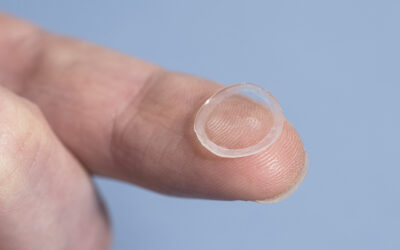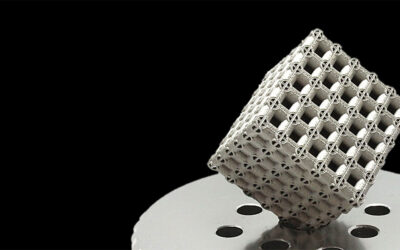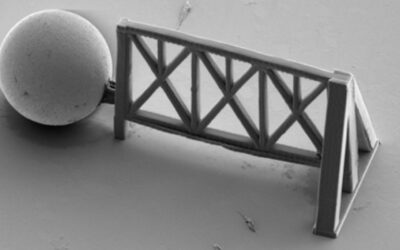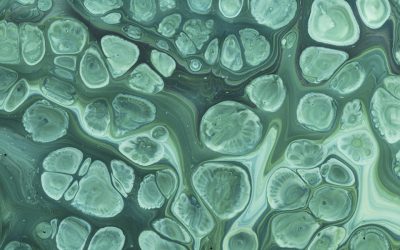In the latest of our series of exclusive Author Commentaries from the forthcoming Advanced Functional Materials 10th Anniversary Edition, Prof. Taeghwan Hyeon discusses the progress made towards multifunctional biomedical applications of silica-based nanoparticles.
See more like this
Access this article for free
Silica based intelligent nanoparticle systems: towards multifunctional biomedical applications
by Taeghwan Hyeon
National Creative Research Initiative Center for Oxide Nanocrystalline Materials and School of Chemical and Biological Engineering, Seoul National University, Korea
My research for the last 13 years here at the Seoul National University can be divided into 3 stages. During the first 4 years, our group had been focused on the synthesis of nanoporous (or mesoporous) materials.[2] In particular, our group pioneered the fabrication of uniform-pore sized mesoporous carbon materials using mesoporous silica materials as templates.[3] From 1999, our group started working on the synthesis of uniform-sized nanocrystals.[4] In particular, the synthesis of uniform magnetite nanocrystals without a size selection process has attracted a lot of attention in the nanoparticle community.[5,6] Around 2003, I thought about combining these two different kinds of nanostructured materials, and I asked one of my students, Jaeyun Kim, who is currently working as a postdoctoral fellow at Harvard University, to immobilize uniform-sized magnetite nanocrystals in mesoporous silica materials. Jaeyun later successfully synthesized mesoporous silica particles immobilized with uniform magnetite nanocrystals and demonstrated their applicability for magnetically guided drug-delivery vehicle.[7] Since then, our group has been focused on the synthesis of multifunctional nanostructured materials for simultaneous diagnosis (or imaging) and therapy.[8]
Meanwhile Prof. Wiesner’s group at Cornell University pioneered the fabrication of dye-doped silica nanoparticles for various biomedical imaging applications.[9,10] I had spent one semester (Fall 2008) at the Prof. Wiesner’s laboratory as a visiting scholar and we wrote the current feature article together with Dr. Yuanzhe Piao in our laboratory and Dr. Andrew Burns at the Prof. Wiesner’s group. For the last two years after publishing the current feature article, our group reported several interesting papers on nanocrystal-immobilized mesoporous silica nanoparticles. We synthesized discrete, monodisperse, and precisely size-controllable core/shell mesoporous silica nanoparticles smaller than 100 nm by using single Fe3O4 nanocrystal as core and we demonstrated the multifunctional medical applications of the core/shell nanoparticles for simultaneous magnetic resonance (MR) and fluorescence imaging, and drug delivery.[11] We also synthesized uniform mesoporous dye-doped silica nanoparticles decorated with multiple magnetite nanocrystals for simultaneous enhanced magnetic resonance imaging, fluorescence imaging, and drug delivery.[12] Wiesner and Mikhail Noginov at Norfolk State University used 44-nm-diameter nanoparticles with a gold core and dye-doped silica shell for the realization of surface-plasmon laser, or spaser.[13] The designed fabrication of core/shell nanoparticles made it possible to fabricate the smallest nanolaser by overcoming the loss of localized surface plasmons by gain.
The research activity on biomedical applications of silica-based nanostructured particles is ever growing. For example, there are more than 110 papers were published in this area during 2009. As elaborated in the feature article, we hope that various silica nanostructured particles can provide extraordinarily powerful tools in the hands of medical doctors for the diagnosis as well as the efficient and specific treatment of diseases.
[1] Y. Piao, A. Burns, J. Kim, U. Wiesner, T. Hyeon, Adv. Func. Mater. 2008, 18, 3745
[2] J. Lee, J. Kim, T. Hyeon, Adv. Mater. 2006, 18, 2073.
[3] J. Lee, S. Yoon, T. Hyeon, S. M. Oh, K. B. Kim, Chem. Commun. 1999, 2177.
[4] J. Park, J. Joo, S. G. Kwon, Y. Jang, T. Hyeon, Angew. Chem. Int. Ed. 2007, 46, 4630.
[5] T. Hyeon, S. S. Lee, J. Park, Y. Chung, H. B. Na, J. Am. Chem. Soc. 2001, 123, 12798
[6] J. Park, K. An, Y. Hwang, J.-G. Park, H.-J. Noh, J.-Y. Kim, J.-H. Park, N.-M. Hwang, T. Hyeon, Nat. Mater. 2004, 3, 891.
[7] J. Kim, J. E. Lee, J. Lee, J. H. Yu, B. C. Kim, K. An, Y. Hwang, C. H. Shin, J. G. Park, J. Kim, T. Hyeon, J. Am. Chem. Soc. 2006, 128, 688.
[8] J. Kim, Y. Piao, T. Hyeon, Chem. Soc. Rev. 2009, 38, 372.
[9] H. Ow, D. R. Larson, M. Srivastava, B. A. Baird, W. Webb, U. Wiesner, Nano Lett. 2005, 5, 113.
[10] A. Burns, H. Ow, U. Wiesner, Chem. Soc. Rev. 2006, 35, 1028.
[11] J. Kim, H. S. Kim, N. Lee, T. Kim, H. Kim, T. Yu, I. C. Song, W. K. Moon, T. Hyeon, Angew. Chem. Int. Ed. 2008, 47, 8438.
[12] J. E. Lee, N. Lee, H. Kim, J. Kim, S. H. Choi, J. H. Kim, T. Kim, I. C. Song, S. P. Park, W. K. Moon, T. Hyeon, J. Am. Chem. Soc 2010, 132, 552.
[13] M. A. Noginov, G. Zhu, A. M. Belgrave, R. Bakker, V. M. Shalaev, E. E. Narimanov, S. Stout, E. Herz, T. Suteewong, U. Wiesner, Nature 2009, 460, 1110.
















